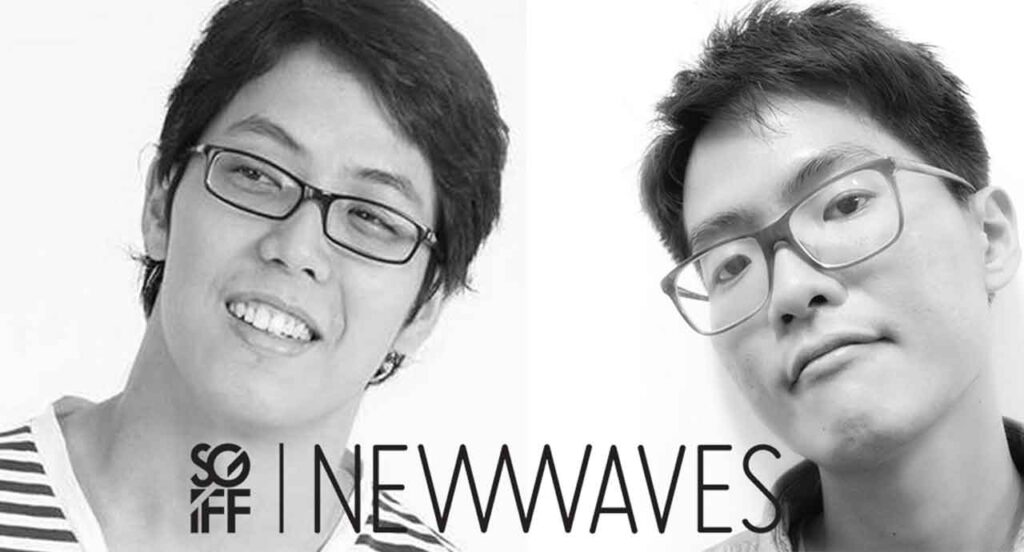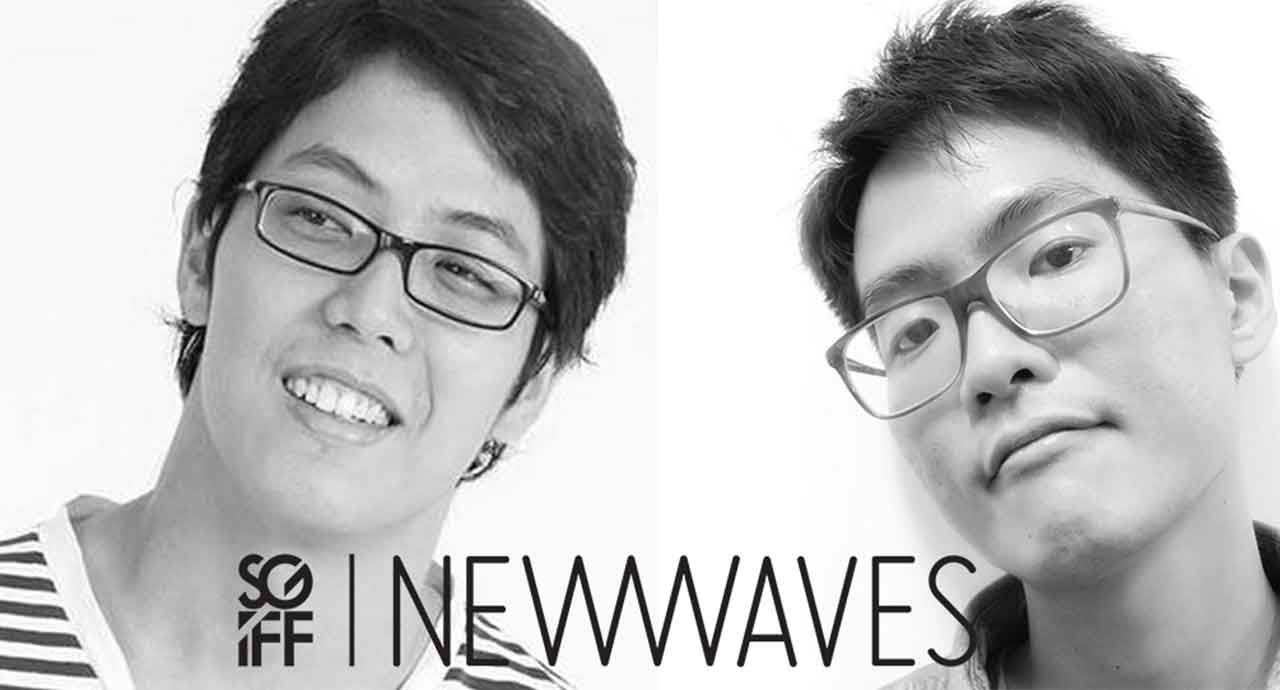New Waves #4: Vanishing Memories – Between Video Art and Cinema With Chulayarnnon Siriphol and Chun Kai Qun

Chulayarnnon Siriphol is a filmmaker from Bangkok, Thailand. In the work he creates, he seems to pull the surreal and the subjective together; he fuses parts of his childhood with experimental filmmaking techniques. At the New Waves session on July 27th, his works, Vanishing Horizon of the Sea and excerpts of Sleeping Beauty were screened. The experimental artist’s films have been shown in festivals throughout Asia and Europe. Among these include the 26th Hamburg International Short Film Festival, the 4th Moscow International Biennale for Film Art, and the 25th Singapore International Film Festival. It is for the latter that the first of his featured works received Special Mention at the Southeast Asian Short Film Competition.
At the session, Chulayarnnon was joined by Singaporean artist-curator, Chun Kai Qun. Kai Qun’s art revolves around the human experience and identity. He was awarded the NAC Arts Scholarship in 2011 and received the Young Artist Award in 2015. His pieces have been showcased at the National Museum of Singapore, Art Stage Singapore, and the Gertrude Contemporary Art Centre in Melbourne, among others. During the dialogue, Kai Qun’s short film The Happy School, was showcased.
Chulayarnnon and Kai Qun’s works are complementary — perhaps not in form, but in intention. The creation of a sculpture or installation is the paralysis of a moment in time and the holding of it in captivity. Likewise, the film suspends life and recomposes it within frames. Though both media may have different effects on their audiences, the artists’ takes on life imitate each other. And thus, a dialogue between the two was only fitting. In Kai Qun’s sculptures and Chulayarnnon’s video work, memory and the self serve as overarching themes. Chulayarnnon believes that there is little separating art from film, “for me, sculpture is similar (to film). The space of the video is (merely) projected in three dimensions.”
A fictional narrative is ordinarily split into three parts — the setup, the confrontation, and the resolution. Most films follow this structure. It purportedly binds consumer to product because it is formulaic and expected; viewers are comfortable and open to being entertained. This was brought up during the dialogue. Chulayarnnon was asked why it is that video art does not follow a story structure. To this, he replied, “I think video art tries to use the moving image as the object (of the film). Sometimes it is related to some issue and there’s no need for a story.”
Even if these works were lined with specific narratives, it seems apparent that such structures may be too abstract to perceive at first glance.The contexts of such work can be so personal that observing is something to be experienced, rather than something by which one can be entertained. And as Kai Qun had remarked, “even if there is a story, it may not be so visible. You need to turn on your consciousness to see (it).” I witnessed this first hand. During the screening of Vanishing Horizon of the Sea, viewers seemed to sink into themselves. They were being confronted with disjointed images. And the putting of these disparate pieces into context possibly required filling in conceptual spaces with personal experiences, feelings, and memories.

Speaking on the film, Kai Qun added, “when I just close my eyes it becomes sound art or ambient sound. You can enjoy it even with no storyline.” So perhaps, in some way, the experimental film does not face the pressure to conform. Chulayarnnon attests to this; perhaps filmmakers feel the urge to “push the boundaries of what is storytelling.” In his case, however, he is more interested in the lapses between the moving and still image.
And beyond this, there is something profoundly personal about what he does. In creating, he often looks “back to (his) personal history”. And in being authentic to this, he captures his subjects from odd angles. The result is a chronicling of life from as normal and life-like a perspective as possible. So much of this is raw and unfiltered; only the intended grainy quality of the video can separate the viewer from the heaviness of what is being translated. In one particular scene in Sleeping Beauty, Chulayarnnon’s grandmother is seen seated in front of a television, experiencing what seems to be grief. In being confronted by something so personal yet universal, the viewer is witness to the expression of emotion, and is then plunged into his or her own.
In subjective experiences like these, memory plays an important role. Kai Qun’s installation, The Paper, Some Paper, for instance, draws on the collective memories people form. This piece in particular is shaped by shared lives and the things from which members of a community can derive a sense of nostalgia. The literal threads of the piece, that run through stacks of newspapers, mimic symbolic ones: threads which connect members in a communal space of feeling. It serves as a reminder for those who know, and for those who do not, the art can inform. As Kai Qun had said, ”art is about communication (and) the idea of reduction is about focusing on what you want to talk about.”
The venue in which such communication takes place is also interesting. In an art gallery, a visitor’s attention is paid freely and willingly. The element of choice is a part of the experience. The cinema, on the other hand, imposes restrictions on the viewer. Chulayarnnon reflected on this dynamic. He believes that “the gallery is much more flexible. Time and space in the gallery is totally different from that in the cinema.” Within the confines of the theatre, the observer is kept within its walls. On the one hand, the cinema frames the event, making the viewer more passive than in a gallery. On the other hand, it allows for a an experience shared among those present. As Kai Qun had put it, “everyone watches the film from the beginning until the end, so everyone can appreciate the film in the same conditions.” He did add, however, that time can transcend the place in which it is shown — “for me, watching a film is not just watching a film, it’s also like a performance.” And perhaps, in this regard, the gallery and cinema can be bridged by the singularity of the experience of a film. A truly powerful piece can transcend the place in which it is delivered.
But to produce a piece like that requires so much of an attention to detail, even these details are not observable. The artist cares, and it is often that care that comes through. It seemed clear to Chulayarnnon that those with a greater interest in filmmaking were more intrigued by the process than actual content. Everything, from the conscious decision to use VHS, to burning rolls of film and repurposing the ashes to mimic the effect of loss, helped make Vanishing Horizon of the Sea intriguing from a technical, and not solely visceral, standpoint. As Kai Qun had said, there is something tactile about the film — “you can see his hands in the work.” And according to Chulayarnnon, “even if people say, ‘oh we have no ways of creating new things because everything has been created’, I still think we can create.” And likewise, for artists brimming with talent and the drive to see their art through, there likely is no end.


